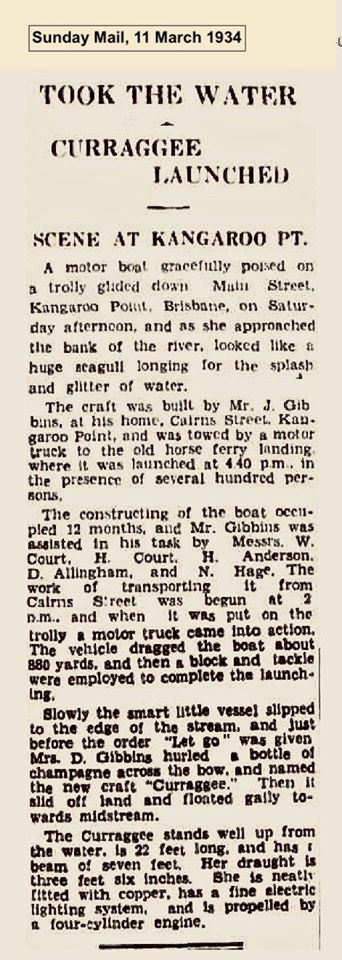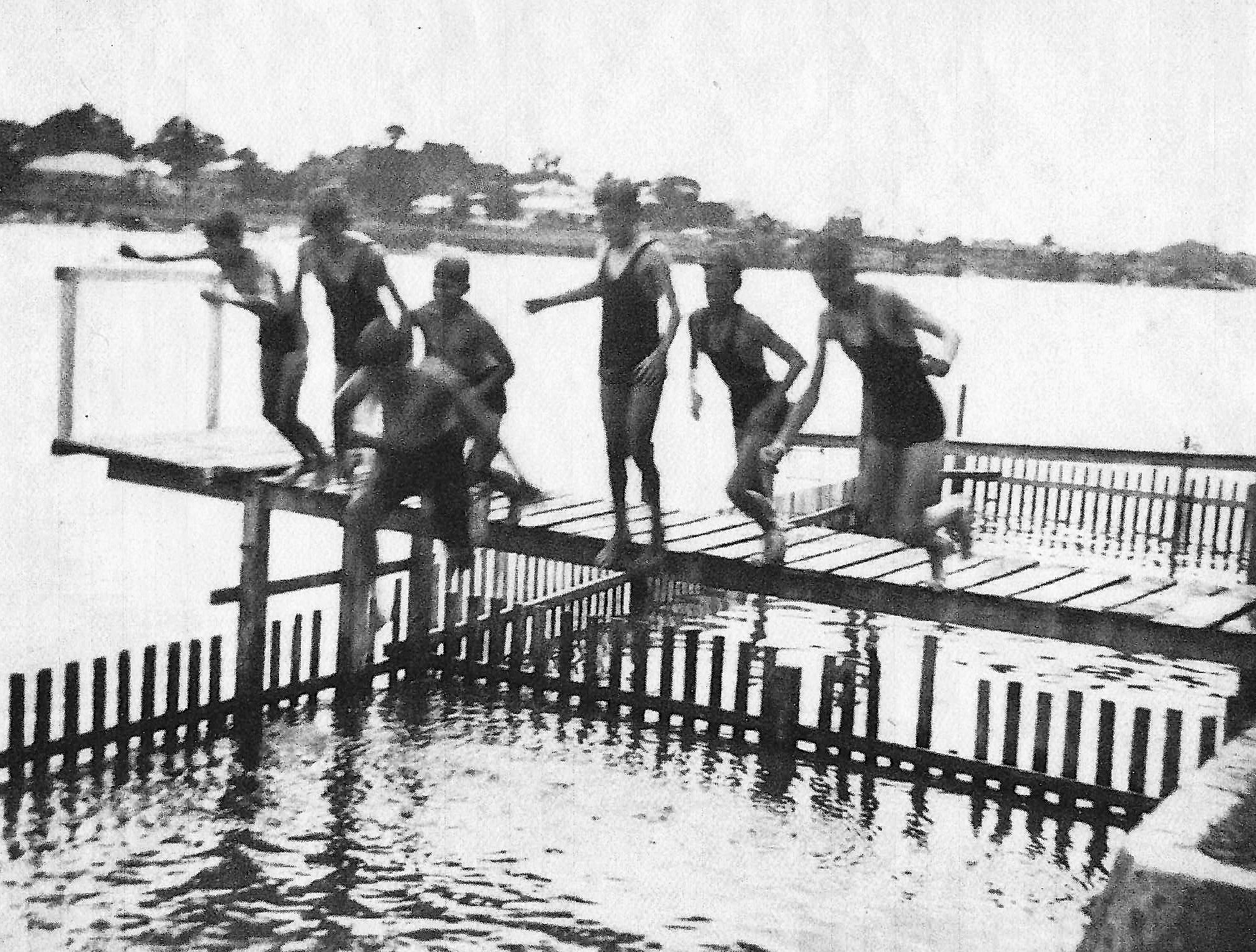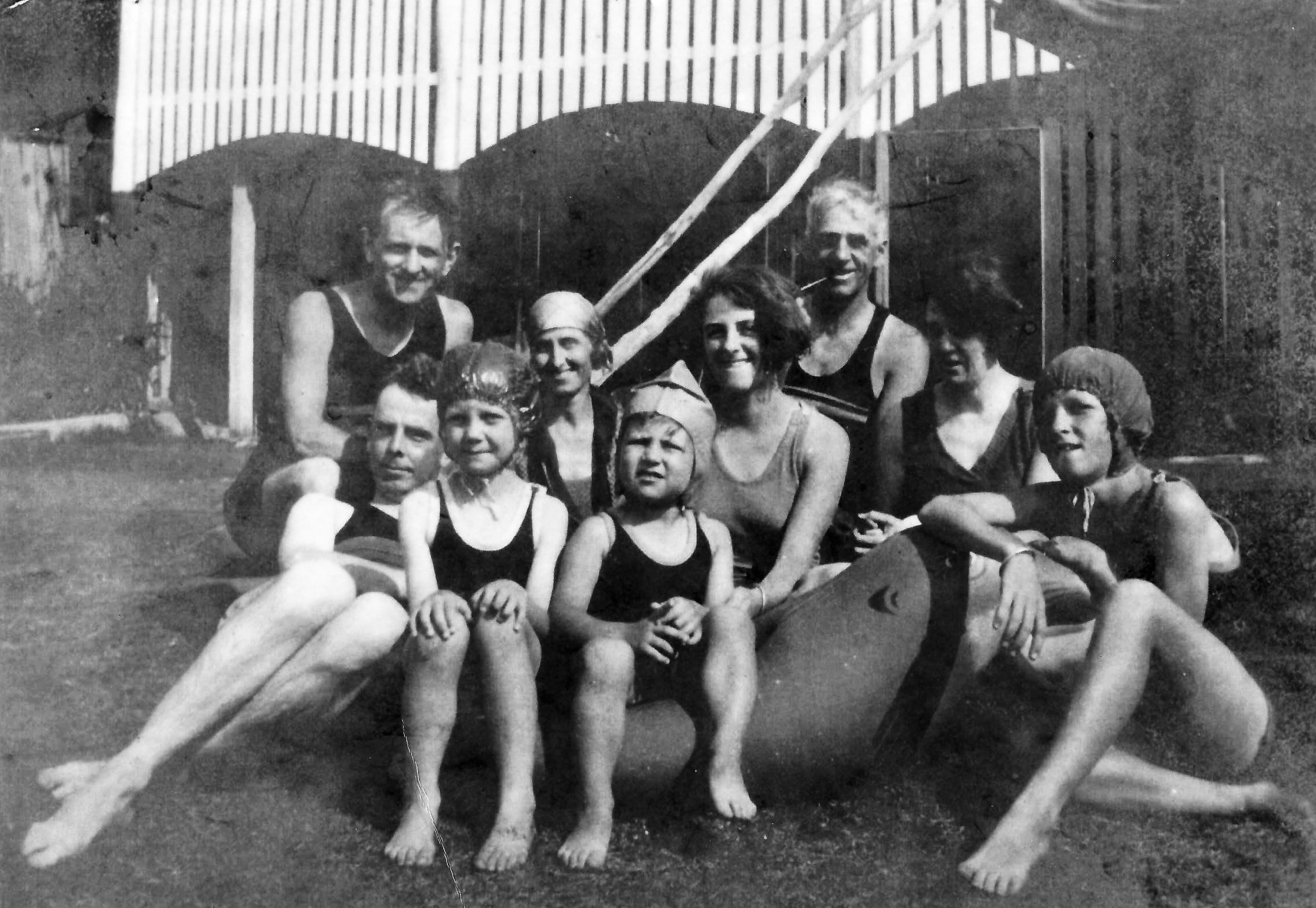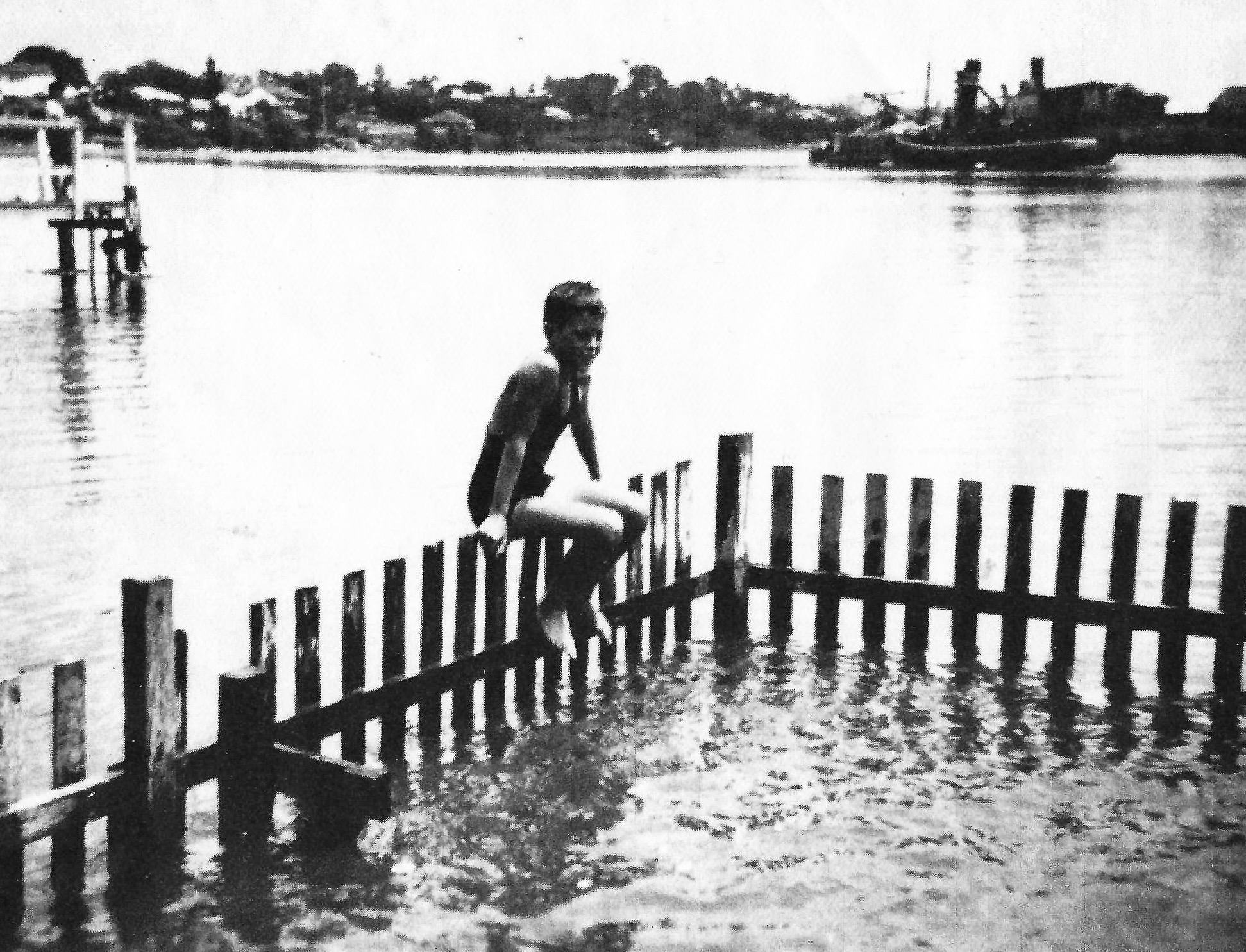Opening of the 1894 sailing season at South Brisbane Sailing Club

Regatta in the South Brisbane Reach of the Brisbane River ca. 1897

Pleasure craft on the Brisbane River ca. 1922

Boat launch at old horse ferry landing.
A poetic description of the launch of a boat built by J. Gibbins Jr at his home in Cairns Street, Kangaroo Point.
 Eight oar race on the South Brisbane Reach ca. 1925
Eight oar race on the South Brisbane Reach ca. 1925

South Brisbane Municipal Swimming Baths
The South Brisbane Municipal Swimming Baths at the corner of Montague Road and Stanley Street were officially opened on 1 November 1902 by the then mayor, alderman Currie. The baths were built without a roof and were the first of their kind in Brisbane, more suitable to the climate and less expensive than fully enclosed baths. The pool was 100ft long and 30ft wide and cost about £860 including sheds. The picturesquely situated South Brisbane Municipal swimming baths during a recent state school girls carnival. (Page 22 of the Queenslander Pictorial, supplement to The Queenslander, 6 April, 1918, Moss-White photo, State Library of Queensland)
The picturesquely situated South Brisbane Municipal swimming baths during a recent state school girls carnival. (Page 22 of the Queenslander Pictorial, supplement to The Queenslander, 6 April, 1918, Moss-White photo, State Library of Queensland)
The baths featured as an important rest stop during the march of the Dungarees on 30 November 1915 when the Railway Band led the marchers down Stanley Street reaching the baths at about 11:20 am. They were met by the Governor, Sir Hamilton Gould Adams who congratulated them for their support of the cause which Great Britain was fighting for. After the men had a refreshing swim, soft drinks, cakes and cigarettes, the Governor and members of the South Brisbane Town Council joined them in their march to the Victoria Bridge.
The Railway Band led the march of the Dungarees down Stanley Street on 30 November 1915. Enthusiastic crowds gathered in every doorway and veranda, and flags fluttered overhead. At around 11.20am they reached the South Brisbane Baths.
After a short swim the Dungarees were provided with soft drinks, cakes and cigarettes. The Governor, Sir Hamilton Gould Adams, met the men at the baths and congratulated them on supporting the cause which Great Britain was fighting for. He marched with the men and members of the South Brisbane Town Council to the Victoria Bridge ((https://environment.ehp.qld.gov.au/heritage-register/detail/? id=600303 ).
(source: Trove/SLQ/Qld Heritage Register)
Ladies Rowing on the Town Reach ca. 1930
View from Kangaroo Point ca. 1930 as members of the Brisbane Ladies Rowing Club, the women’s four with cox, are out on the Town Reach passing Customs House and the City Wharves.

Swimming lessons in the River at 47 Laidlaw Parade in the 1930s
Would you swim in the river at East Brisbane today? Or eat fish caught in the river there?
Fishing and swimming in the river at East Brisbane and surrounds were popular activities around the 1920s and 1930s. The river was clean and fish stocks were plentiful. The early riverside homes all had jetties which were popular for fishing or diving into the river. The section of river near Laidlaw Parade and Mowbray Park was a popular water playground and meeting place for the locals in those days.

Local identity Sam (Samuel) Learmonth conducted private swimming lessons for local children at his riverside home at 47 Laidlaw Parade.

A wooden fence built into the river around the jetty created a safe shark-proof swimming enclosure. Lessons cost a shilling. Young people loved meeting up at Sam’s place on hot summer days.

The nearby public Mowbray Park tidal baths (which we looked previously) were also popular from 1920 to their closure in August 1940. (information and photos supplied: G. Gregory)
